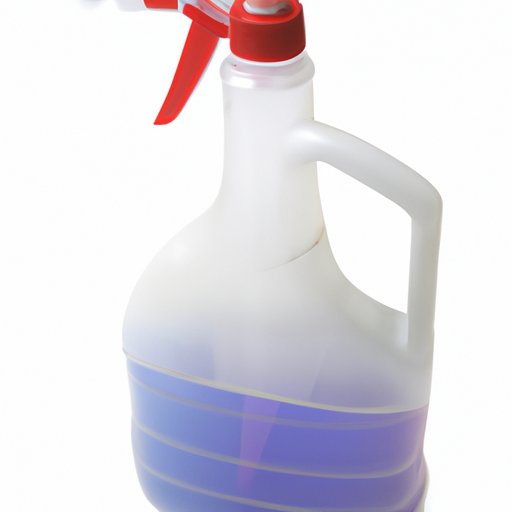
I. Introduction
When it comes to cleaning your home, safety should always be a top priority. However, some of the most commonly used household cleaning products, such as bleach and vinegar, can create dangerous chemical reactions when mixed together. In this article, we will explore what happens when you mix bleach and vinegar, why it’s so dangerous, and how you can avoid making this mistake in your own home.

II. The Chemical Reaction You Need to Avoid: Mixing Bleach and Vinegar
When bleach and vinegar are mixed together, a chemical reaction occurs that produces chlorine gas. Chlorine gas is a toxic gas that can cause respiratory problems, severe irritation to the eyes and skin, and even respiratory failure in extreme cases.
This chemical reaction occurs because bleach contains sodium hypochlorite, which reacts with acetic acid in vinegar to produce hypochlorous acid and chlorine gas.
III. The Dangerous Combination: What Happens When You Mix Bleach and Vinegar
The harmful gases produced when bleach and vinegar are mixed can lead to a variety of symptoms, including coughing, wheezing, chest pain, nausea, and headaches. Exposure to high levels of these gases can even result in life-threatening complications, such as pulmonary edema and respiratory failure.
IV. Why Mixing Bleach and Vinegar is Harmful: Understanding the Science Behind It
Chlorine gas is the primary danger when bleach and vinegar are mixed, but the acidity levels and pH values of these two substances also play a significant role. Bleach has a very high pH value, which means it is highly basic, while vinegar is very acidic. When the two substances are mixed, the acidity of the vinegar reacts with the basicity of the bleach, creating a chemical reaction that produces chlorine gas.
V. The Risks of Mixing Household Cleaning Products: Bleach and Vinegar
Bleach and vinegar are not the only household cleaning products that can create dangerous chemical reactions when mixed together. Other common products, such as ammonia and bleach or hydrogen peroxide and vinegar, can also lead to harmful results when combined. It is important to always read labels and instructions on cleaning products and avoid mixing different products together.
VI. A Cautionary Tale: What Happens When You Mix Bleach and Vinegar at Home
Many individuals have experienced the dangers of mixing bleach and vinegar firsthand. Personal accounts describe the onset of coughing and wheezing, as well as difficulty breathing, when exposed to the toxic gas that is produced. In some cases, individuals have had to seek medical attention for complications related to the exposure.
VII. The Hidden Dangers of Cleaning: The Consequences of Mixing Bleach and Vinegar
In addition to the risks to your health, mixing bleach and vinegar can also have consequences for your indoor air quality and the condition of your home. Exposure to the gases produced can damage surfaces and weaken structural materials. Even more concerning, the gases can accumulate in small, enclosed areas like bathrooms and result in long-term respiratory problems and other health conditions.
VIII. Staying Safe at Home: The Importance of Knowing What Happens When You Mix Bleach and Vinegar
To avoid the risks associated with mixing bleach and vinegar, it is important to know the facts about why this combination is so dangerous. Safe cleaning practices include reading labels and instructions on cleaning products and avoiding the mixing of different products together. Additionally, it is a good idea to consider using alternative household cleaners like baking soda or hydrogen peroxide.
IX. Conclusion
Mixing bleach and vinegar can create a dangerous and potentially life-threatening situation. By understanding the science behind this chemical reaction and practicing safe cleaning habits, you can help protect yourself and your family from harm. Always remember to read labels and instructions on cleaning products, and never mix bleach and vinegar or other cleaning products together. By taking these precautions, you can enjoy a safe and clean living environment.





